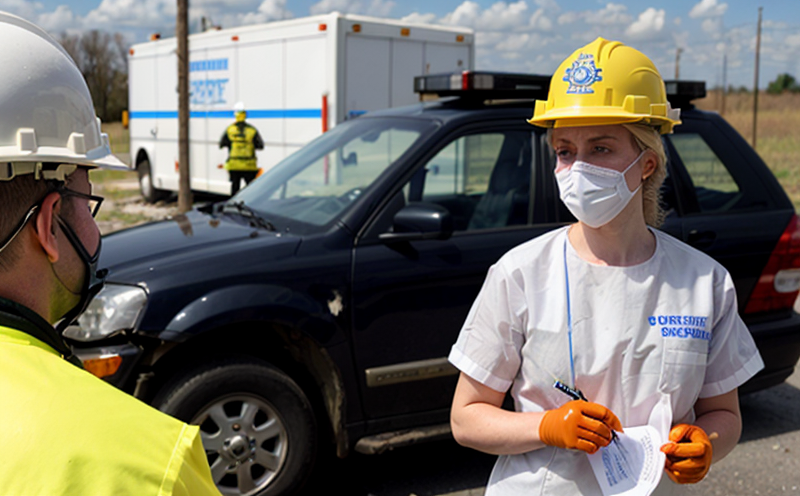ASTM E668 Testing of Emergency Personal Dosimeters
The ASTM E668 test method is a critical standard that ensures the accuracy, reliability, and performance of emergency personal dosimeters used in radiation and nuclear testing. These devices are essential tools designed to protect individuals from overexposure to ionizing radiation during emergencies or accidents involving radioactive materials.
The primary focus of ASTM E668 is on the measurement of absorbed dose by personnel exposed to ionizing radiation. This test method provides a framework for calibrating, testing, and ensuring that dosimeters meet stringent performance criteria set forth in international standards such as ISO 19253:2017(E) (Dosimetry—Determination of Dose with Personal Dosimeters).
The ASTM E668 test involves subjecting the dosimeter to a series of radiation exposures, typically using gamma rays or X-rays. After each exposure, the device is removed from the radiation field and brought to a measurement facility where its readings are compared against known reference values. The process ensures that the dosimeters accurately record the absorbed dose, which is crucial for effective emergency response planning.
For the test to be successful, proper specimen preparation is essential. This includes ensuring that the dosimeter is correctly worn by individuals in a manner consistent with its intended use during an actual emergency. Specimen preparation also involves verifying the initial calibration of the dosimeters before they are subjected to radiation exposures.
The instrumentation used for this testing must be precise and capable of delivering accurate dose measurements. This typically includes calibrated radiation sources, monitoring equipment, and data acquisition systems designed to capture detailed information about each exposure event. Reporting from these tests is comprehensive and includes not only the final results but also any deviations or discrepancies observed during the testing process.
The ASTM E668 test method plays a vital role in maintaining the integrity of personal dosimeters, ensuring they function correctly under real-world conditions. Compliance with this standard helps protect workers who may be exposed to ionizing radiation, thereby enhancing overall safety and reducing potential health risks associated with overexposure.
Industry Applications
- Nuclear Power Plants: Ensuring the reliability of dosimeters used by plant personnel during routine checks or in case of accidents involving radioactive materials.
- Hospitals and Medical Facilities: Supporting healthcare workers who may be exposed to radiation during diagnostic procedures or emergency situations.
- Research Institutions: Providing accurate dose measurements for researchers working with radioactive isotopes.
- Emergency Services: Equipping first responders with dosimeters that can provide real-time data on radiation exposure during incidents involving nuclear materials.
Why Choose This Test
Choosing ASTM E668 testing for emergency personal dosimeters offers several key advantages. Firstly, it ensures compliance with international standards, which is crucial for maintaining credibility and trust within the industry. Secondly, the rigorous nature of this test method helps identify any potential flaws or inconsistencies in the dosimeter's performance early on, allowing for timely corrections if necessary.
Moreover, ASTM E668 testing provides peace of mind by confirming that the dosimeters meet all safety requirements set forth by regulatory bodies worldwide. This is particularly important given the high stakes involved when dealing with ionizing radiation. Lastly, choosing this test can help organizations avoid costly mistakes or accidents related to inaccurate dose measurements.
Use Cases and Application Examples
| Use Case | Description |
|---|---|
| Nuclear Power Plant Incident | Determining the exact amount of radiation exposure experienced by workers during a reactor meltdown or other significant event. |
| Hospital Emergency Response | Monitoring the radiation levels encountered by medical staff treating patients exposed to radioactive materials. |
| Research Lab Incident | Evaluating the impact of an accidental release of radioactive substances in a laboratory setting. |
| Emergency Services Training Exercise | Simulating real-world scenarios where first responders must rely on accurate dose measurements to protect themselves and others. |





